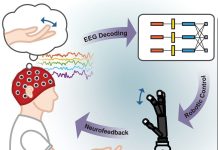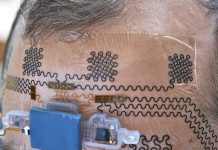
A novel brain imaging method, detailed in a recent publication in Science Translational Medicine, offers a significant breakthrough in diagnosing mild traumatic brain injuries (mTBIs).
This groundbreaking technique, developed by researchers at the University of Missouri and elsewhere, led by David Gozal, M.D., M.B.A., Ph.D. (Hon), stands out for its ability to identify mTBIs that traditional imaging methods like MRI often miss.
mTBIs, commonly known as concussions, are a prevalent issue, affecting a significant portion of the population. They can lead to long-lasting effects and increase the risk of neurological disorders such as depression, dementia, and Parkinson’s disease.
Despite their prevalence, many mTBI cases go undiagnosed, partly due to the limitations of current imaging techniques in detecting “invisible” brain inflammation.
The innovative imaging method developed by Samir Mitragotri, Ph.D., and his team at Harvard University’s Wyss Institute and SEAS, uses immune cells to detect inflammation in the brain, a common consequence of mTBIs.
The process involves attaching gadolinium, a standard MRI contrast agent, to macrophages, a type of immune cell, via hydrogel-based micropatches.
When these macrophages migrate to areas of brain inflammation, the gadolinium enhances the MRI’s ability to reveal the inflammation, improving the accuracy of mTBI diagnoses.
The research team faced a challenge in creating this method: gadolinium needs to interact with water to function as a contrast agent, but their initial microparticle design was water-repelling.
To overcome this, they developed a new hydrogel-based backpack for the macrophages, enabling effective attachment and sustained release of gadolinium.
The efficacy of this technique was demonstrated in animal models. The researchers used mice and pigs to test the new hydrogel-based micropatches, now called M-GLAMs (macrophage-hitchhiking Gd(III)-Loaded Anisotropic Micropatches).
One of the key findings was that M-GLAMs did not accumulate in the kidneys, a common issue with existing gadolinium-based contrast agents, and showed no negative side effects in the tested animals.
In the pig model of mTBI, M-GLAMs revealed a significant increase in gadolinium intensity in the choroid plexus, a region known for immune cell entry into the brain, indicating inflammation.
This was in contrast to results with traditional contrast agents, suggesting that M-GLAMs offer a more targeted and effective approach to detecting brain inflammation post-mTBI.
Another advantage of M-GLAMs is the significantly lower required dose of gadolinium compared to current agents, potentially making MRI more accessible to patients with kidney issues or those unable to tolerate higher doses.
While the current iteration of M-GLAMs cannot pinpoint exact injury locations, when combined with other treatment modalities, they could provide a more effective way to identify and manage inflammation in mTBI patients, expediting recovery.
The technology is currently in the process of patent application, and the researchers are exploring partnerships to bring this innovative method into clinical trials.
This development represents a significant step forward in medical imaging, particularly in the context of mTBIs, demonstrating the untapped potential within the human body for health monitoring, disease diagnosis, and treatment.
If you care about stroke, please read studies that diets high in flavonoids could help reduce stroke risk, and MIND diet could slow down cognitive decline after stroke.
For more information about health, please see recent studies about antioxidants that could help reduce the risk of dementia, and tea and coffee may help lower your risk of stroke, dementia.
The research findings can be found in Science Translational Medicine.
Copyright © 2023 Knowridge Science Report. All rights reserved.



